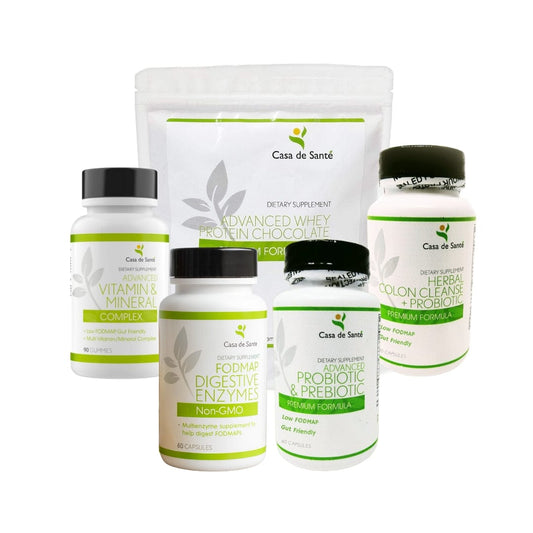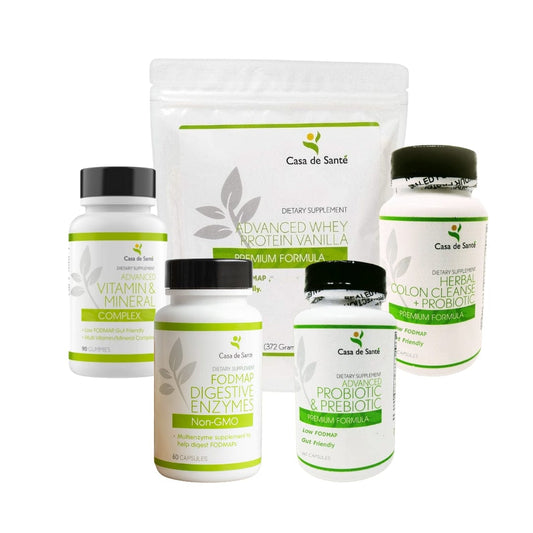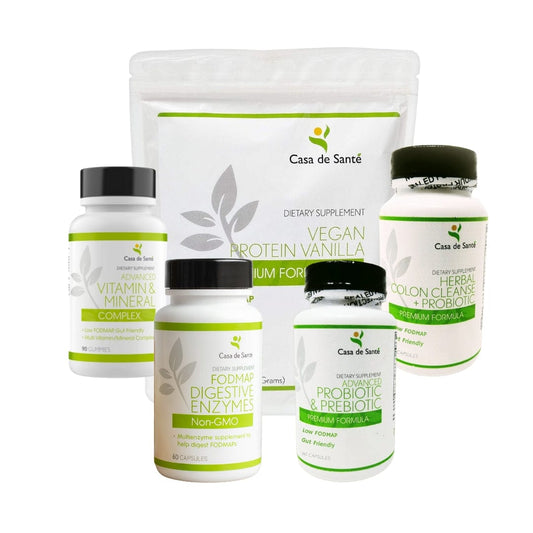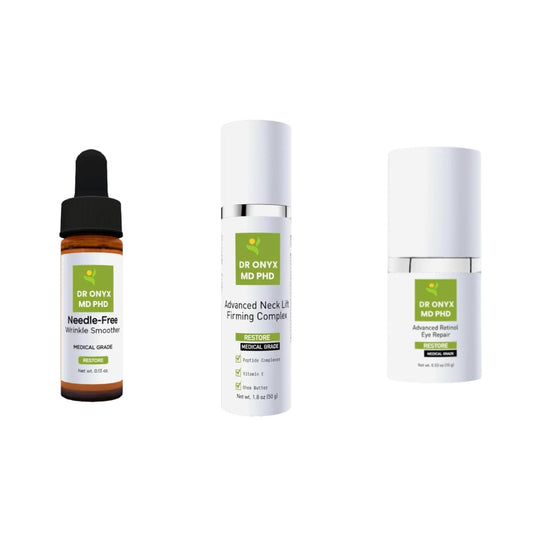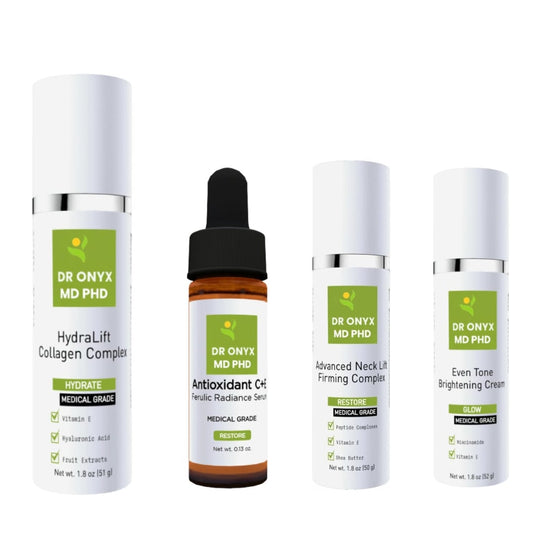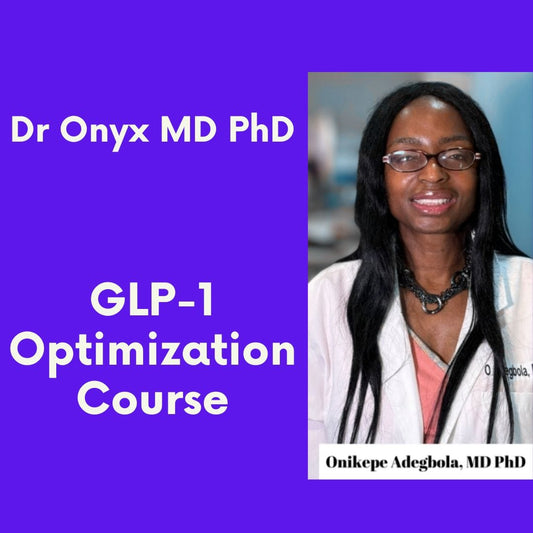Natural GLP-1 Agonists: Do They Exist and How Do They Work?
The buzz around GLP-1 agonists like Ozempic and Wegovy has reached fever pitch in recent years. These medications have revolutionized weight management and diabetes treatment, but they come with hefty price tags and potential side effects. This has many people wondering: are there natural alternatives that can mimic these effects? The short answer is yes – nature does provide compounds that can stimulate GLP-1 receptors, though with important differences from pharmaceutical options. Let's dive into the world of natural GLP-1 agonists, how they work, and what science says about their effectiveness.
Understanding GLP-1 and How It Works in Your Body
Glucagon-like peptide-1 (GLP-1) is a hormone produced in your intestines when food enters your digestive system. This remarkable hormone plays several crucial roles in metabolism and appetite regulation. When GLP-1 is released, it signals your pancreas to produce insulin, slows stomach emptying, and tells your brain that you're getting full – a powerful trifecta for managing blood sugar and reducing food intake.
Pharmaceutical GLP-1 agonists are designed to mimic this hormone but with enhanced durability in the bloodstream. They bind to GLP-1 receptors throughout the body, creating similar effects but with greater intensity and duration than the body's natural hormone, which typically degrades within minutes.
The Science Behind GLP-1 Receptor Activation
When a compound – whether natural or synthetic – activates a GLP-1 receptor, it triggers a cascade of biological responses. The receptor changes shape, activating intracellular signaling pathways that ultimately lead to increased insulin secretion (when blood glucose is elevated), reduced glucagon release, slowed gastric emptying, and increased feelings of satiety in the brain's appetite centers.
This complex signaling system evolved to help humans regulate energy intake and blood glucose. In our modern environment of abundant food, stimulating these pathways can help counter the tendency toward overeating and metabolic dysfunction.
Natural Foods and Compounds That Act as GLP-1 Agonists
While no natural compound matches the potency of pharmaceutical GLP-1 agonists, several foods and plant compounds have been shown to stimulate GLP-1 production or enhance its effects. These natural options work through various mechanisms – some directly stimulate GLP-1 secretion, while others inhibit DPP-4, the enzyme that breaks down GLP-1, effectively extending its activity in the body.
Fiber-Rich Foods That Boost GLP-1
Dietary fiber, particularly fermentable fibers, stands out as one of the most effective natural GLP-1 stimulators. When fiber reaches your large intestine, gut bacteria ferment it to produce short-chain fatty acids (SCFAs) like butyrate, propionate, and acetate. These SCFAs directly stimulate L-cells in your intestine to release GLP-1.
Foods particularly rich in fermentable fibers include Jerusalem artichokes, chicory root, garlic, onions, leeks, asparagus, bananas (especially slightly underripe ones), oats, barley, and legumes. Regular consumption of these foods can lead to sustained increases in GLP-1 production, especially when they become a consistent part of your diet.
Protein and Its Impact on GLP-1 Secretion
Protein consumption is another powerful natural trigger for GLP-1 release. Research has shown that protein-rich meals stimulate greater GLP-1 secretion than carbohydrate or fat-dominant meals. This helps explain why high-protein diets are often effective for weight management – they naturally enhance satiety hormones like GLP-1.
Animal proteins seem particularly effective, but plant proteins from sources like legumes, nuts, and seeds also stimulate GLP-1 release. Whey protein has received special attention in research, with studies showing it can significantly increase postprandial GLP-1 levels compared to other protein sources.
Plant Compounds With GLP-1 Agonist Properties
Several plant-derived compounds have shown promising effects on GLP-1 pathways. Berberine, found in plants like barberry and Oregon grape, has been extensively studied for its metabolic benefits, which appear to involve increased GLP-1 secretion and enhanced receptor sensitivity. Similarly, compounds in bitter melon have demonstrated GLP-1-stimulating properties in research studies.
Green tea catechins, particularly epigallocatechin gallate (EGCG), may increase GLP-1 production while also inhibiting DPP-4, potentially extending GLP-1's activity in the body. Curcumin from turmeric, resveratrol from grapes and berries, and ginsenosides from ginseng have all shown some capacity to influence GLP-1 pathways in preliminary research.
Natural DPP-4 Inhibitors: Extending GLP-1's Effects
One clever way to enhance natural GLP-1 activity is by inhibiting dipeptidyl peptidase-4 (DPP-4), the enzyme that rapidly breaks down GLP-1 in the bloodstream. While pharmaceutical DPP-4 inhibitors like Januvia are commonly prescribed for diabetes, nature provides several compounds with similar, albeit milder, effects.
Foods and Herbs That Naturally Inhibit DPP-4
Several culinary herbs and spices contain compounds that can inhibit DPP-4 activity. Turmeric, ginger, rosemary, oregano, and marjoram all contain bioactive compounds that have demonstrated DPP-4 inhibitory effects in laboratory studies. Regular inclusion of these herbs and spices in cooking may provide cumulative benefits for GLP-1 activity.
Certain fruits also contain natural DPP-4 inhibitors. Berries (especially blueberries, strawberries, and cranberries), apples, and citrus fruits contain flavonoids and other polyphenols that can inhibit DPP-4 to varying degrees. Apple cider vinegar, while not a DPP-4 inhibitor per se, has been shown to slow gastric emptying and improve insulin sensitivity through mechanisms that may complement GLP-1 pathways.
Lifestyle Factors That Influence GLP-1 Function
Beyond specific foods and compounds, several lifestyle factors can significantly impact your body's GLP-1 system. Understanding these connections provides additional avenues for naturally enhancing GLP-1 function.
Exercise and GLP-1 Production
Regular physical activity has been shown to increase GLP-1 sensitivity and potentially enhance secretion. Both aerobic exercise and resistance training appear beneficial, with some research suggesting that high-intensity interval training (HIIT) may be particularly effective for stimulating GLP-1 release. The effect seems to be both acute (during and immediately after exercise) and chronic (as a result of regular training).
The exercise-GLP-1 connection helps explain another mechanism by which physical activity supports metabolic health and weight management. By enhancing GLP-1 function, exercise may improve satiety signaling and glucose regulation independent of its calorie-burning effects.
Sleep, Stress, and Circadian Rhythms
The quality and timing of sleep significantly impact GLP-1 function. Sleep deprivation has been shown to reduce GLP-1 response to meals, potentially contributing to increased appetite and impaired glucose metabolism. Similarly, chronic stress can disrupt normal GLP-1 signaling through elevated cortisol levels and inflammation.
Maintaining consistent eating patterns that align with your circadian rhythms may also support optimal GLP-1 function. Some research suggests that GLP-1 secretion follows a daily rhythm, with potentially greater responsiveness earlier in the day. This aligns with other research suggesting that front-loading calorie intake earlier in the day may benefit metabolic health.
Comparing Natural vs. Pharmaceutical GLP-1 Agonists
While natural approaches to enhancing GLP-1 function offer many benefits, it's important to understand how they differ from pharmaceutical options like semaglutide (Ozempic, Wegovy) or liraglutide (Saxenda, Victoza).
Potency and Effectiveness Differences
The most obvious difference is potency. Pharmaceutical GLP-1 agonists are specifically designed to strongly activate GLP-1 receptors and resist degradation, resulting in dramatic effects on appetite, blood sugar, and weight. Natural approaches typically produce more modest effects that accumulate gradually over time.
This difference in potency translates to differences in weight loss outcomes. While pharmaceutical GLP-1 agonists can produce weight loss of 15-20% in many users, natural approaches typically yield more modest results. However, natural methods often come with broader health benefits beyond weight management and may be more sustainable long-term.
Safety Considerations and Side Effects
Pharmaceutical GLP-1 agonists commonly cause side effects like nausea, vomiting, diarrhea, and constipation, especially during initial treatment and dose escalation. More serious potential side effects include pancreatitis, gallbladder disease, and thyroid tumors (based on animal studies). Natural approaches generally have milder or negligible side effects when implemented as part of a balanced diet.
For people with diabetes or severe obesity, the benefits of pharmaceutical GLP-1 agonists often outweigh the risks. For others looking for modest improvements or preventive benefits, natural approaches may provide a gentler alternative with fewer downsides.
Practical Ways to Incorporate Natural GLP-1 Agonists
If you're interested in naturally enhancing your body's GLP-1 function, several practical strategies can help you incorporate these principles into your daily routine.
Dietary Strategies for Maximum Benefit
Start by increasing fermentable fiber intake through foods like onions, garlic, leeks, Jerusalem artichokes, green bananas, oats, and legumes. Aim for a diverse range of fiber sources to support a healthy gut microbiome that can efficiently produce the SCFAs that stimulate GLP-1 release.
Include protein at every meal, with emphasis on options that have shown particular benefit for GLP-1 function, such as fish, yogurt, and whey protein. Incorporate herbs and spices with DPP-4 inhibitory properties liberally in your cooking – turmeric with black pepper (which enhances curcumin absorption), ginger, rosemary, and oregano are excellent choices.
Consider timing your meals to align with your body's natural rhythms, with more substantial meals earlier in the day when GLP-1 responsiveness may be higher. Experiment with occasional time-restricted eating, which some research suggests may enhance GLP-1 sensitivity.
Supplement Considerations
While whole foods should form the foundation of any natural approach to enhancing GLP-1 function, certain supplements may provide additional support. Berberine supplements (500-1500mg daily) have substantial research behind them for metabolic health. Fiber supplements containing fermentable fibers like inulin, FOS (fructooligosaccharides), or resistant starch can boost SCFA production and GLP-1 release.
Green tea extract, bitter melon extract, and ginseng supplements have also shown promise in research, though effects may vary between individuals. As with any supplement regimen, it's wise to consult with a healthcare provider, especially if you have existing health conditions or take medications.
The natural approach to enhancing GLP-1 function represents a holistic strategy that may not match the dramatic results of pharmaceutical options but offers sustainable benefits with minimal downsides. By combining dietary choices, physical activity, stress management, and sleep optimization, you can support your body's innate GLP-1 system and the metabolic health benefits it provides.

